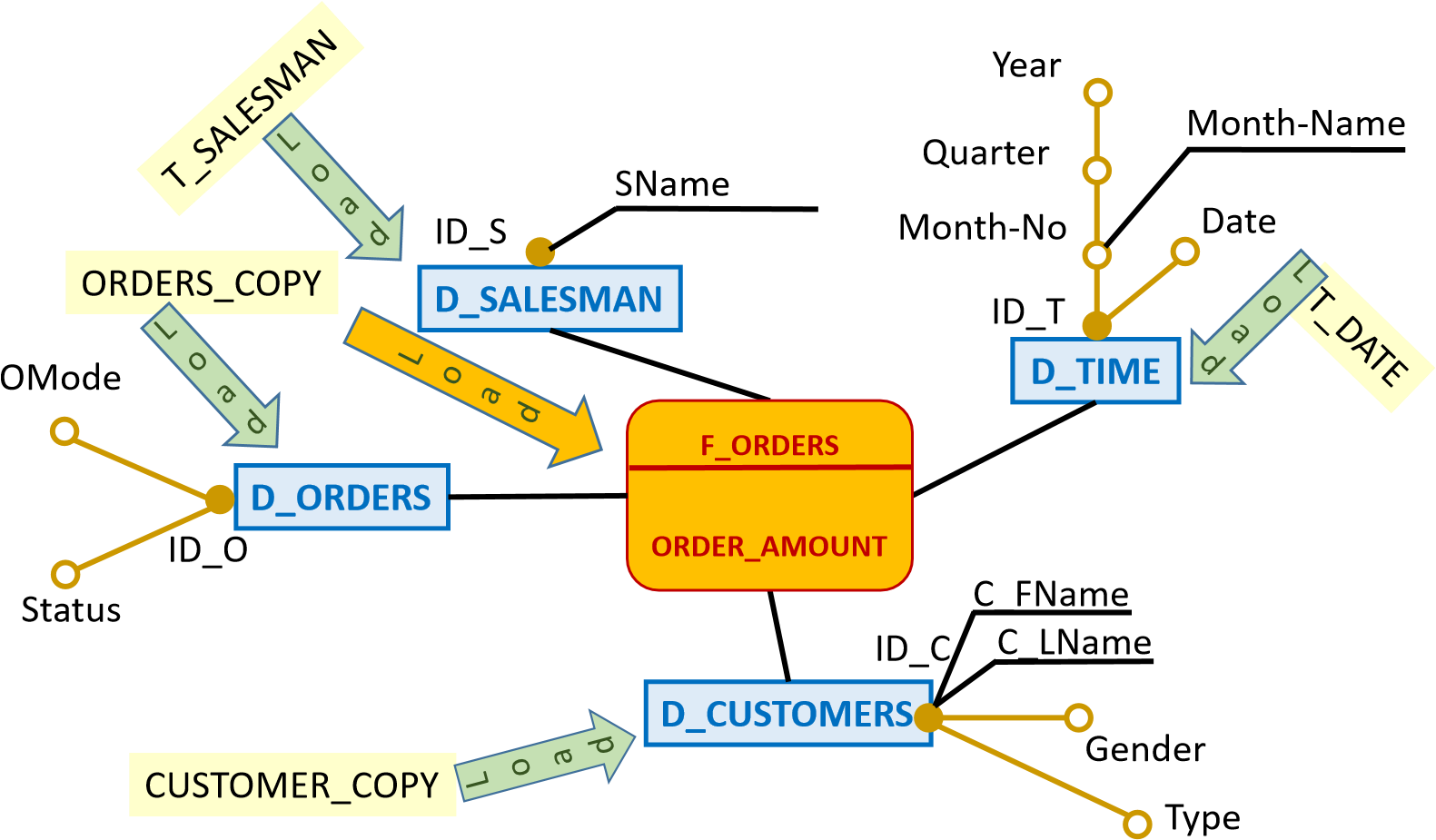Question
Lab # 7 Preparing Data for Loading Statement purpose To understand how to gather data by joining multiple tables in order to loading a data
Lab # 7
Preparing Data for Loading
Statement purpose
To understand how to gather data by joining multiple tables in order to loading a data warehouse dimensional tables.
Activity Outcomes
Students will be able to prepare data (raw and/or calculated data) issued from many tables. They need to solve the problem of identifiers for the DW tables: Identifiers could be values coming directly from the data source or as surrogate key. A surrogate key is a replacement identifier automatically generated (by an Oracle Sequence for example).
Instructor Note
Implement all the questions below and submit the code and its result displayed by Oracle after each execution.
Tables to use
To load the Star schema in Figure 7.1 you will use the following Temporary tables prepared during the previous Labs: T_DATE, CUSTOMERS_COPY, and ORDERS_COPY.
Questions to Answer
To have all data on hand, print the content of the tables mentioned above.
- Because the OE database does not have a SALESMAN table, we CREATE one called T_SALESMAN (SALES_REP_ID, SNAME) from the OE.ORDERS.SALES_REP_ID; its columns are:
- SALES_REP_ID unique values. Replace Null IDs with 999; it is better than ignore Nulls in analysis. Do not define a PK because the table has too few rows.
- SNAME is a new column. Unfortunately, we do not have the names of the sales representatives in the OE database. To overcome this problem and facilitate filling the new table, set the SNAME as the concatenation of the SALES_REP_ID and the constant NAME (for example, Salesman 153 will have name NAME-153 .); note this tip is just for the lab work but does not apply is real situations.
You should get the following content for T_SALESMAN:
| SALES_REP_ID | SNAME |
| 153 | NAME-153 |
| 154 | NAME-154 |
| 155 | NAME-155 |
| 156 | NAME-156 |
| 158 | NAME-158 |
| 159 | NAME-159 |
| 160 | NAME-160 |
| 161 | NAME-161 |
| 163 | NAME-163 |
| 999 | NAME-999 |
Preferably, print the contents of the T_SALESMAN table.
Assume we implement the star schema depicted in Figure 7.1 as a set of relational tables: Each dimension is transformed into a table; the fact also becomes a table.

Figure 7.1. A Simplified Star Schema
Year Month-Name Quarter T_SALESMAN SName ID_S Month-No Date ORDERS COPY D_SALESMAN ID T T_DATE OMode D TIME F_ORDERS D_ORDERS ID_O Status ORDER_AMOUNT C FName ID C C LName D_CUSTOMERS Gender CUSTOMER_COPY o Type Year Month-Name Quarter T_SALESMAN SName ID_S Month-No Date ORDERS COPY D_SALESMAN ID T T_DATE OMode D TIME F_ORDERS D_ORDERS ID_O Status ORDER_AMOUNT C FName ID C C LName D_CUSTOMERS Gender CUSTOMER_COPY o Type
Step by Step Solution
There are 3 Steps involved in it
Step: 1

Get Instant Access to Expert-Tailored Solutions
See step-by-step solutions with expert insights and AI powered tools for academic success
Step: 2

Step: 3

Ace Your Homework with AI
Get the answers you need in no time with our AI-driven, step-by-step assistance
Get Started


